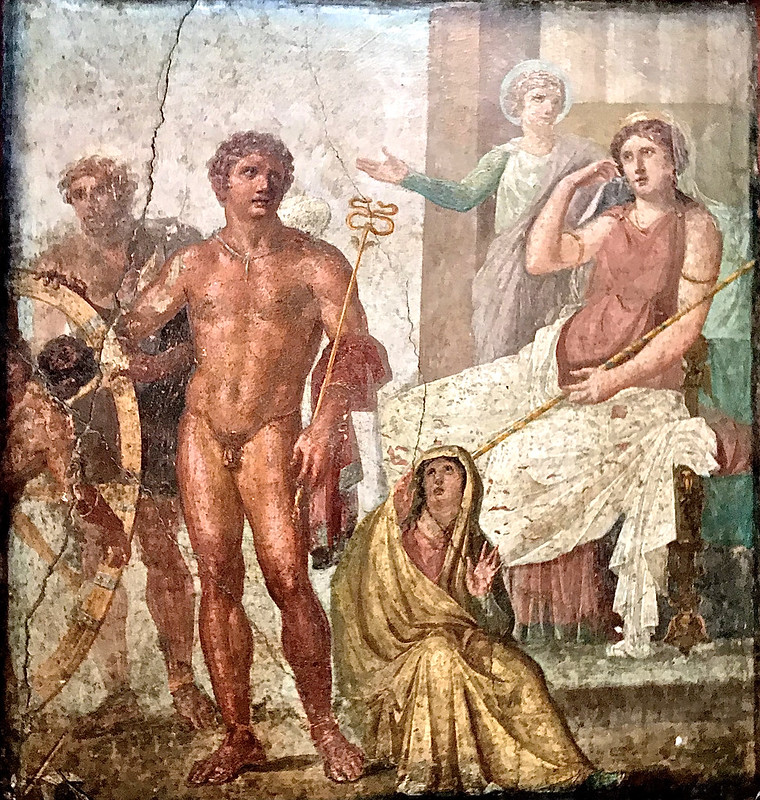In Stone and Story
Early Christianity in the Roman World
Materials available for professors by request only
Chapter 5: Sacrifice & Sin
Photo Gallery
Photo 5.1
This fresco (from the House of the Vettii) portrays a famous scene in Greek mythology – the punishment of Ixion. In the story, Ixion both murders his father-in-law and attempts to seduce Juno (or Hera in Greek nomenclature), the wife of Jupiter (or Zeus) — two heinous relational sins. For these offenses, Jupiter orders Mercury (or Hermes) to bind Ixion to a spinning wheel forever. In this fresco, the far left shows Ixion bound to the wheel; Mercury is toward the middle and Juno is seated on her throne to the right. Other lesser characters in the story are also depicted.
Photo 5.2
Figure 5.9 of In Stone and Story offered a view from the front of the macellum of Pompeii. This photo offers another view of the macellum, this time from behind the stalls where meat was sold after having been offered to a deity in a nearby temple. This section of the macellum appears in the top left corner of figure 5.9 of In Stone and Story.
Class Activities
Divide the class into two groups and have them consider the extent to which Christianity is based on a do ut des principle (i.e., a person gives honor to God in order to get something back from God). One group should present a case for seeing Christianity in that light, and the other should present the opposite case.
Discussion Questions
- How might we understand the Greco-Roman sacrificial system in today’s terms? What did sacrificing do for the ordinary person in the Roman world? Why did so many see it as such an integral part of life?
- Compare the Greco-Roman understanding of sacrifice to the Judean understanding of sacrifice? How are they different? How are they similar? What shift needed to take place, either for Judeans or for gentiles, in order to understand what Jesus-followers claimed to happen in the life, death, and resurrection of Jesus?
- Jesus-devotion fused into one system (1) the ethical dimension of ancient philosophy and (2) devotion toward a deity. What may have been challenging about seeing Jesus devotion in this light? How do the New Testament writers view sin differently from other ancient systems of the metaphysical?

